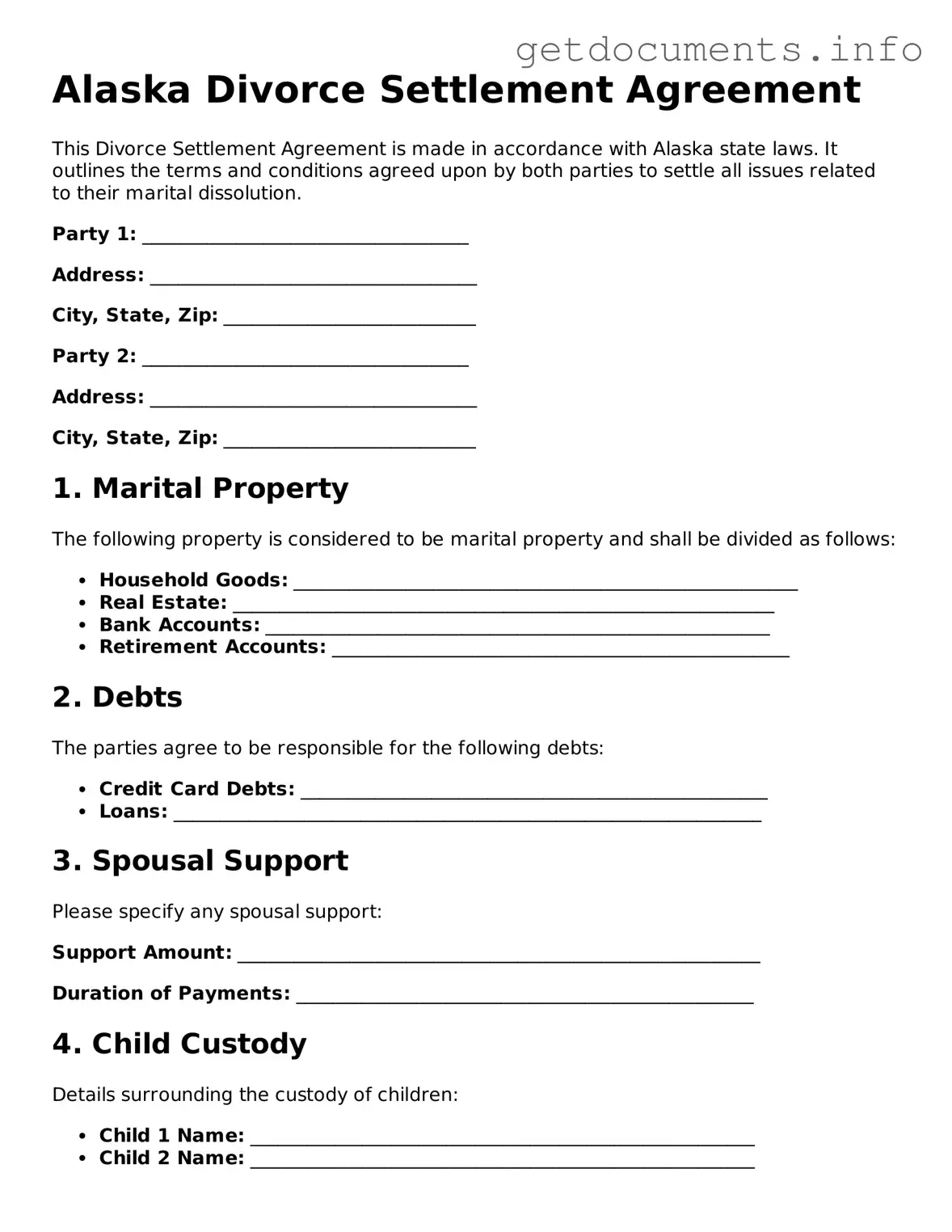Free Divorce Settlement Agreement Template for Alaska
The Alaska Divorce Settlement Agreement form is a legal document that outlines the terms of a divorce, detailing the division of assets, debts, and responsibilities between spouses. This form serves as a crucial tool for couples seeking to formalize their separation and ensure a fair resolution. Understanding its components can significantly ease the process of divorce.
Ready to take the next step? Fill out the form by clicking the button below.
Access Divorce Settlement Agreement Editor
